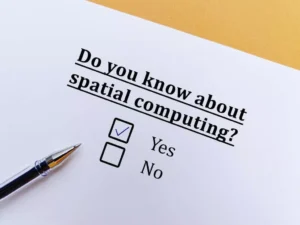How To Program Blockchain: A Guide For Business Owners

When the article “Bitcoin: A Peer-to-Peer Electronic Cash System” was revealed and Blockchain technology was launched in 2008, it changed the world. The article stated that blockchain technology is a combination of public key cryptography, cryptographic hash functions, and proof-of-work. This event also triggered developers’ interest, so many individuals decided to figure out how to program blockchain.
Several derivative and blockchain-inspired initiatives have been developed in recent years. More companies have decided to use these initiatives to improve their businesses. Thus, more business owners are interested in how to program blockchain.
This article covers all the data one needs to know about programming a blockchain. After reading this material, you won’t become a blockchain developer, but the entire development process will be less mysterious.
What is blockchain?
Let’s first figure out what blockchain is and how it can benefit a business. It is a distributed, unchangeable ledger that makes it easier to record transactions and track assets in a corporate network.
Blockchains store data in digital format, just like databases. They are well recognized for their critical function in cryptocurrency systems (Bitcoin, Ethereum, Litecoin, etc.), where they keep a secure and decentralized record of transactions.
But what makes the new technology different from traditional systems? The novelty is that it ensures the accuracy and security of recorded data. It also provides data safety without using a trusted third party (a bank or a financial institution).
So, why is blockchain important for a business? Here’s a list of potential advantages:
- It is a public digital ledger that is immutable. If a transaction is recorded, the data can no longer be altered.
- Blockchain is safe due to the encryption function.
- Transparency of transactions. The ledger updates data automatically, so transactions are immediate and transparent.
- It doesn’t require a third party. The system is decentralized and doesn’t rely on an intermediary. This function benefits a business due to lower transaction fees.
- Participants of the system (miners or stakeholders) verify and validate the transaction’s legitimacy.
Information is critical for any business. The faster a business transfers and receives data, the better. Blockchain is perfect when it comes to transferring data since it offers transparency. Users can access safely stored data on an immutable ledger only if they have permission. Moreover, a blockchain network can monitor orders, payments, accounts, and production, among other things.


We are confident that we have what it takes to help you get your platform from the idea throughout design and development phases, all the way to successful deployment in a production environment!
The cost of creating a blockchain project
Blockchain app development is expensive and time-consuming, but it is worthwhile. The cost of blockchain projects varies depending on a number of criteria. These are a few criteria that impact the price:
- Project size.
- Project type (native, hybrid, or cross-platform).
- The difficulty level.
- Team size (of the developer company).
- The chosen platform (check out the “Choose A Suitable Platform” section further in the article).
If a small or medium-sized business wants to develop a mobile app, the price may vary from $20,000 and $70,000. The cost may be influenced by the type of developer. Well-known global developers often charge from $60,000 to $200,000 or more.
It’s also worth mentioning that the industry experiences significant demand for cryptocurrency and non-cryptocurrency-based projects. Cryptocurrency projects include such examples as crypto wallets and online investment apps. Non-cryptocurrency-based projects include banking and logistics software. Thus, high demand influences the price.
Along with fundamental project features, UI/UX design complexity, and all the aforementioned criteria, third-party APIs integration also influences the final price of blockchain project development.
How long does it take to develop a blockchain project?
Some people want to know how to program blockchain, and others want to understand how long it takes to develop the project. The period depends on similar factors that influence the price.
The time necessary to develop a blockchain project depends on its scale and the features of a future product. Such factors as a programming language, the developer company’s team size, and the budget affect the period necessary to develop a project. Typically, developing a blockchain project takes four to eight months.
What factors to consider during blockchain implementation?
Since the introduction of this technology, firms in many industries have adopted game-changing solutions. But how and where do you start? Here’s a simple guide to various factors you should consider before adopting this technology.
Identify use case
Business owners must first choose a business-relevant use case. Blockchain technology should help solve current issues rather than everything at once. Blockchains are adept at three business tasks:
- Asset Management. The asset management case encompasses payments, exchanges, escrow, retirement, and insurance. A crypto asset is a tokenized form of a physical asset, i.e., gold, land, oil, etc.
- Authentication and verification of data. Immutable storage, digital signatures, and encryption are all examples of data verification and authentication. Moreover, business owners may store their data in any format thanks to this function. Blockchains may be used to generate and validate digital signatures and establish public-private key pairs.
- Smart Contracts. These are programs that run when the system meets specific criteria. Businesses use smart contracts to automate the agreement implementation to ensure all participants are certain of the immediate outcome without the help of an intermediary.
Choose a suitable case from the list, or determine a use case relevant to your business. Proceed with implementing other steps once you identify what business aspects to improve.
Find blockchain developers
Developing blockchain requires skills and experience. It may come as a surprise, but it’s not so easy to find blockchain developers. Even though the career of a blockchain developer is promising, it requires a lengthy learning process. A developer must code in more than one programming language, understand how different blockchain platforms work, know how to use various tools, etc.
Choose consensus mechanism
Proof of Work (PoW) is the original consensus method in the first blockchain that runs the cryptocurrency Bitcoin. Ethereum is another example of a blockchain running on PoW. However, the platform recently switched to PoS. Today, numerous distributed ledger systems provide a variety of consensus mechanisms, including the following:
- Proof of Stake (PoS)
- Delegated Proof of Stake (DPoS)
- Proof of Elapsed Time
- Federated consensus
- Derived PBFT
- Deposit-based consensus
- Byzantine fault tolerance
- Federated Byzantine Agreement
- Redundant Byzantine Fault Tolerance
- Simplified Byzantine Fault Tolerance
- Round Robin
Select the consensus method that makes the most sense for your use case. Thus, you should research all options to find the one which suits your business goals and standards.

Choose a suitable platform
Today, there are several blockchains available; the majority of them are of an open-source type. However, these platforms may be limited to consensus mechanisms. Thus, it’s critical to select a suitable blockchain. Here is a list of platforms to check out:
- Quorum
- Corda
- Open chain
- Ethereum
- Hyperledger Fabric
- Stellar
- Domus Tower Blockchain
- Multichain
- BigChainDB
- Hyperledger Iroha
- Symbiont Assembly
Consider your budget when choosing the platform. For example, building an app on Ethereum may cost from $6,000 to $400,000, depending on the project’s size. Note: the list includes only a few examples; many more suitable platforms are available to implement.
Identify nodes work algorithm
When discussing your project with developers, consider all types of blockchains. They may be permissioned (a land registration managed by the government) or permissionless (like Bitcoin or Litecoin, where any user can become a miner).
Blockchain solutions may be private (a contract management system used for a local outsourcing company), public (an asset-backed cryptocurrency backed by gold or silver), or hybrid (a financial institution running a shared KYC platform).
Another critical factor to think about and discuss with developers is whether the system should run nodes on the cloud, on-premises, or both. The decision influences the type of hardware and software to purchase. It also affects the type of operating systems, like Windows, CentOS, Fedora, etc.
Network management process
This step requires choosing the data-receiving method. Business owners should remember that the node a system produces contains all the chain properties. You should keep this in mind when managing the network. The step requires focusing on choosing digital tokens or cryptocurrencies, depending on the type of blockchain you use.
Design APIs
An API, or application programming interface, is a method for two or more computer applications to communicate with one another. Some blockchain platforms (mentioned in the “Choose a suitable platform” step) have pre-built APIs, while others don’t. Typically, businesses require the following major API categories:
- Smart contracts
- Management of payments, insurance, escrow, etc
- Data validation with digital signatures
- Production of key pairs and addresses (for digital wallets, transactions, etc.)
- Audit-related tasks
- Data storage and transfers
The list of APIs depends on each business and industry.
Set up scalability
Whether you own a small or large business, you expect it to grow. You may not need all the features offered by a blockchain, but you may require them in the future. Consider leaving space for scalability to add more features in the future as the business grows. Discuss all options with blockchain developers.
Conclusion
Switching your business to a blockchain is a difficult process. It requires research and an understanding of how the project should work. On the bright side, a business owner doesn’t have to become a blockchain developer or start learning programming languages like Python to build an entire blockchain from scratch. The best option is to delegate the task to experienced developers after researching the process of implementing a blockchain into a business.
The most important question for the business owner is not “how to program blockchain?” but “what factors to consider?” If you’re seriously considering integrating blockchain technology, you should consider all the factors mentioned in this article. Once you understand the scale of the project, you will be able to determine the price and find skilled developers.
Top Articles
Embracing Automotive Digital Transformation to Accelerate Innovation
I am here to help you!
Explore the possibility to hire a dedicated R&D team that helps your company to scale product development.






